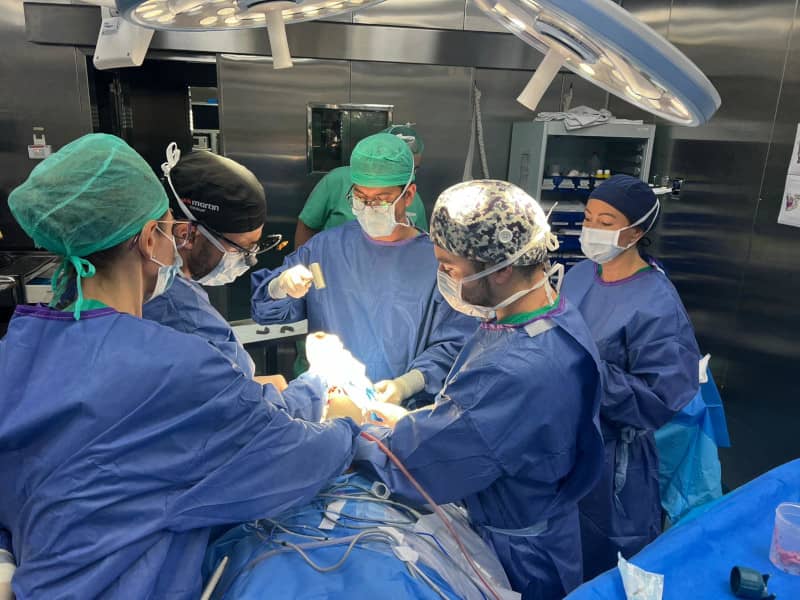Orthognathic surgery in Mallorca
Do you want to solve your dental or facial problem?
Ask us for an appointment with free check-up and diagnosis
Whether you want to start treatment or request information, you are in the right place. Leave us your details and we will contact you within three hours.

What is orthognathic surgery?
Orthognathic surgery is the surgical intervention to correct the size and position of the jaw bones that have not developed correctly in adult patients. It is a technique that is performed when the dento-cranio-maxillofacial problem is severe and negatively affects both facial aesthetics and the functionality of the structure, especially in terms of chewing and breathing.
This type of surgical intervention can treat problems of malocclusion (class II or mandibular retrognathia or class III or mandibular prognathism), open bite, crossbite, upper dental crowding, sleep apnoea, TMJ disorders, gummy smile or skeletal disharmony in the face.
It is worth mentioning that although orthodontic treatment does not have to include surgical intervention, treatment that includes orthognathic surgery should be coupled with orthodontic placement. In fact, the conventional treatment plan is the placement of preoperative orthodontics that provides the surgeon with a stable structure to carry out the movements planned in the surgical phase and, finally, the placement of orthodontics after surgery that allows the occlusion to be corrected.
Types of orthognathic surgery
This procedure can only be performed by a maxillofacial surgeon, as this is the only specialist with the capacity to treat both the bones and the soft tissues of the face. And depending on each case, that is, depending on the dentofacial imbalance to be corrected, there are several types of orthognathic surgery that the specialist can recommend once the problem has been diagnosed:
This type of surgical intervention is performed with the aim of placing the maxilla in the correct position to restore facial harmony but, above all, to restore the functionality of the bone of the jaw, but especially to restore the functionality of the bone for chewing, breathing and speaking.
This is why orthognathic surgery of the jaw is used to correct facial deformities such as class III malocclusion (mandibular prognathism), open bite or even a gummy smile.
In this case, the procedure consists of making a cut in the maxillary bone that results in the advancement, retrusion, lengthening, shortening or rotation of the bone. Once the bone is in the correct position, it is fixed in place with titanium plates which, as with dental implants, is a biocompatible material.
In this case, the most widespread practice is orthognathic surgery, the most widespread practice is mandibular advancement surgery, due to the complications involved in retrograde surgery. This surgical procedure is necessary when a person has a small and receding mandible with respect to the maxilla.
In other words, a class II malocclusion or retrognathia, a malformation that not only affects the harmony of the lower part of the face but can also cause functional problems such as sleep apnoea.
Mandibular advancement surgery is performed by making a cut on each side of the jaw bone, causing it to move forward. The new position is fixed by placing titanium plates.
Postoperative
After surgery, it takes approximately one month for the patient to be able to return to their normal routine. It is normal that during the days following the surgery there is swelling in the face and difficulties in eating, speaking and physical activities. It is therefore essential to follow the recommendations of the specialist and maxillofacial surgeon in order to guarantee the success of the intervention.
On the other hand, as we have mentioned, orthognathic surgery is only an intermediate phase of a treatment plan which also includes the fitting of orthodontics. Therefore, once the postoperative period is over, in order to achieve the objectives set, it will be necessary to carry out the appropriate follow-up and replace the orthodontics to ensure the correct position of the teeth in the arch.
Especialistas en Orthognathic surgery specialists in Palma de Mallorca
Dr. Ángel Cabanes
Oncological surgery, advanced oral surgery and implantology
Bachelor of Medicine and Surgery. Specialist in Maxillofacial Surgery, Dental Implants and Facial Aesthetics.




